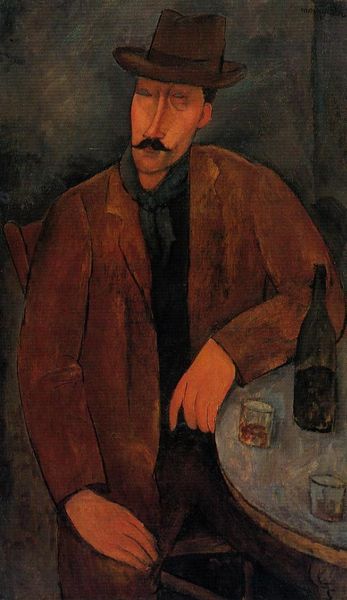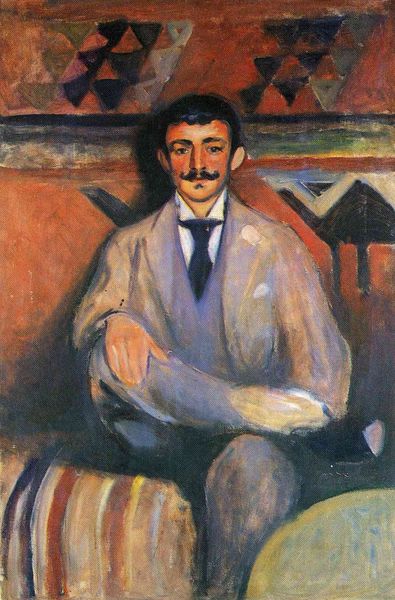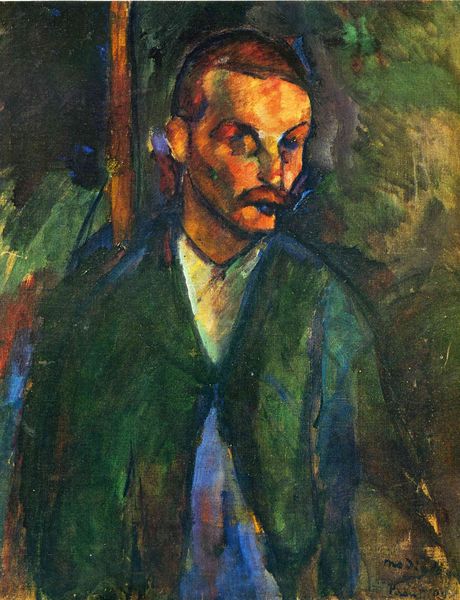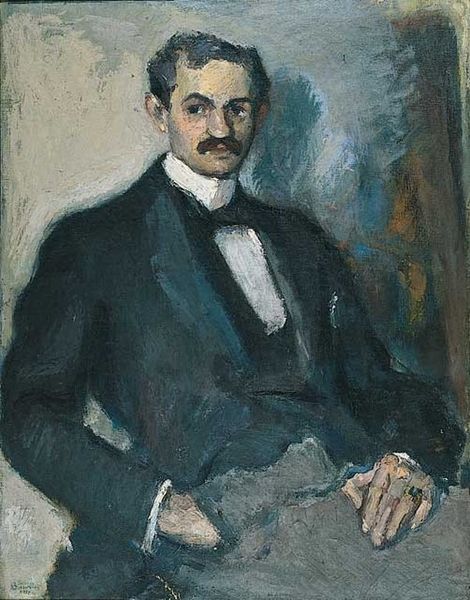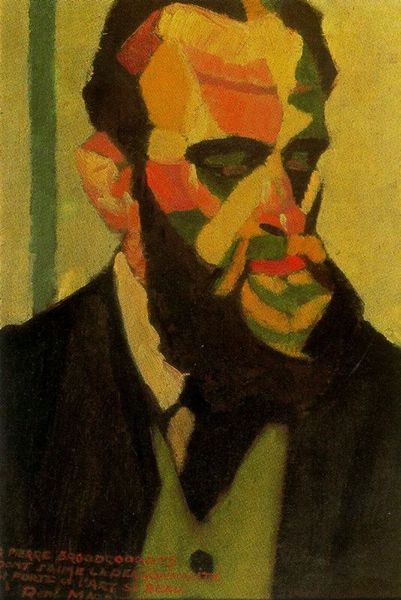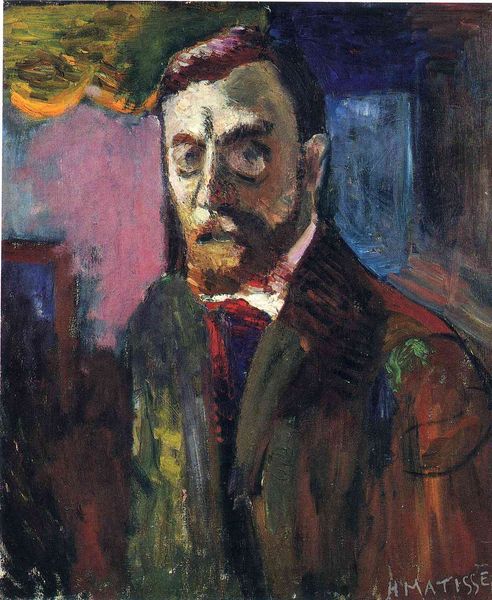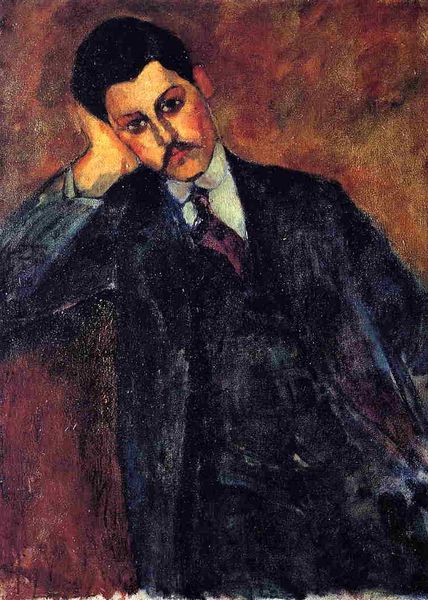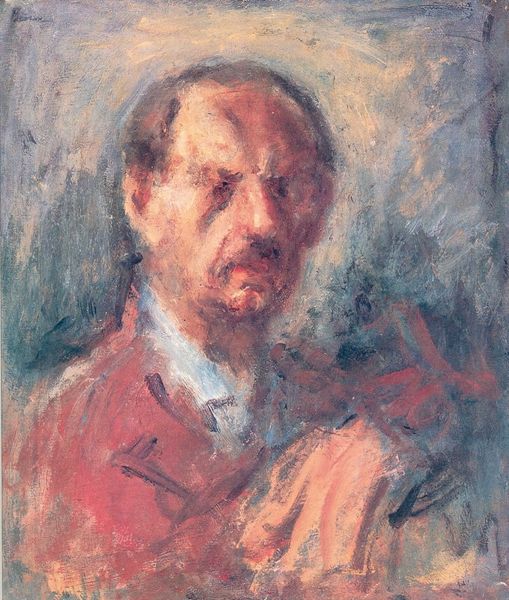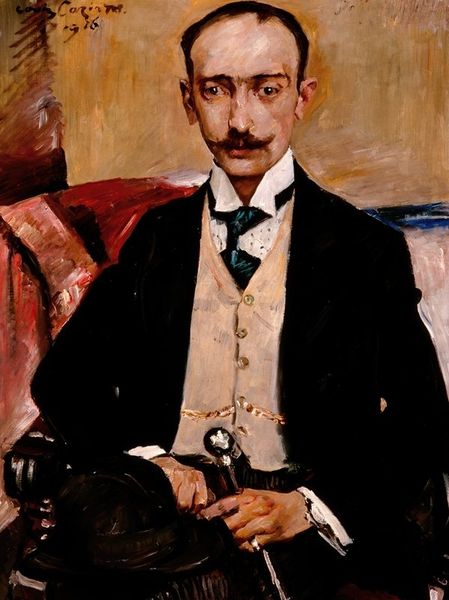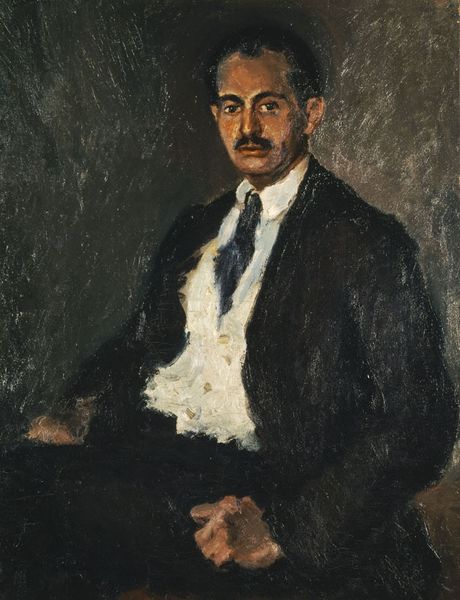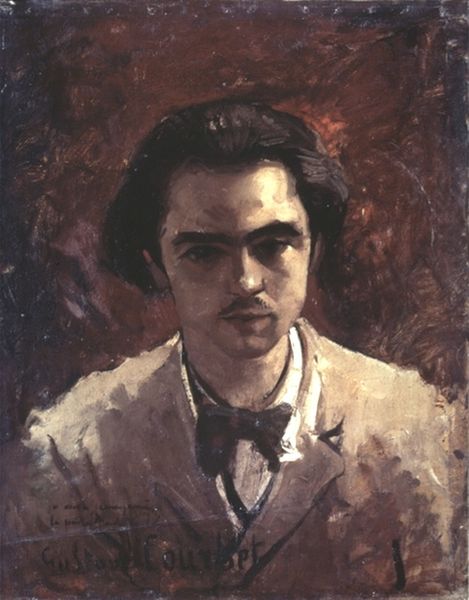
Copyright: Mark Rothko,Fair Use
Curator: This is Mark Rothko’s "Self-Portrait," painted in 1936. He captures himself in oil on canvas, a study in muted tones. Editor: I'm struck by how veiled the figure appears. The heavy shadows across the eyes suggest both mystery and a certain vulnerability, perhaps even introspection. Curator: Indeed. The formal aspects contribute to this reading. Note how Rothko employs a limited palette, dominated by earthy browns and oranges, creating a sense of depth through subtle tonal shifts. The brushstrokes are quite visible, energetic. Editor: That concentrated color—the small but sharp flash of scarlet in the necktie—really jumps forward, though. It acts almost as a visual metaphor, an artery perhaps? Especially coupled with the dark glasses that visually suggest not sight, but a deliberate withholding. A suppression, even. Curator: I find your suggestion compelling. It certainly disrupts the composition and imbues the portrait with psychological weight, pushing the reading beyond a simple representational exercise. Also, let's consider the tension created by the flatness of the picture plane versus the implied three-dimensionality of the figure. This juxtaposition prefigures Rothko's later abstract work. Editor: Precisely! In that regard, these "early" Rothkos give viewers access to figural strategies, perhaps keys to deciphering some of his later "color field" exercises. Here the subject is partially hidden, then completely sublimated. Fascinating. And the obscured glasses take on greater importance if you interpret them as a mask. What is he protecting? Curator: A productive reading that pushes us to acknowledge Rothko as not merely a purveyor of color but an articulator of form—line, shade, texture all building toward meaning, with or without clear reference. Editor: Yes, it's like viewing the DNA of Rothko's later work, distilled into representational form. Curator: So true. His signature concern with light and dark, and how these intersect with inner emotion is all so deftly presented. Editor: He certainly makes a striking statement about the power of holding back as a potent tool of revelation.
Comments
No comments
Be the first to comment and join the conversation on the ultimate creative platform.
